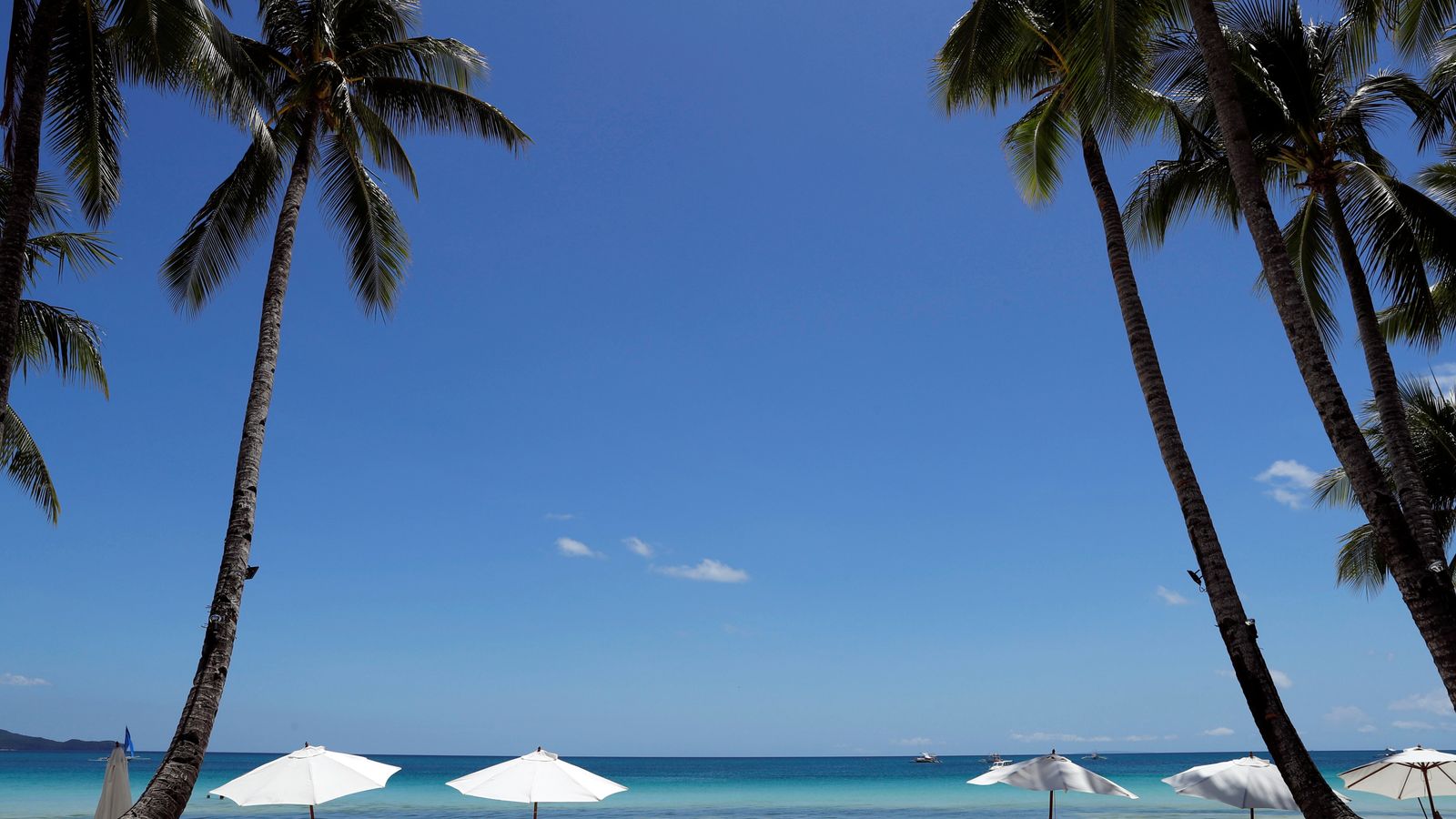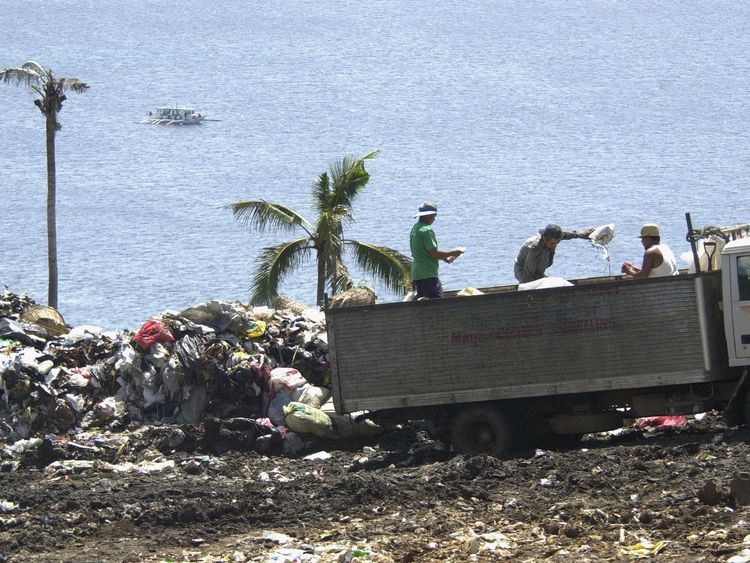
[ad_1]
The Philippines has reopened its famous holiday island of Boracay – six months after it was closed for becoming a “cesspool”.
Once seen as a paradise escape, the tiny island was shut down in April after President Rodrigo Duterte called it a “cesspool” tainted by raw sewage flowing from hotels and restaurants into the sea.
On Friday, the white sand idyll reopened to visitors, but with a host of new rules which restrict drinking alcohol on the beach and limit the number of tourists and hotels.
Only 19,000 tourists will be allowed on the island a day, while only half of its 12,000 hotel rooms can be booked.
It will continue to be renovated as years of over-development, with about two million tourists a year, have left it crowded, filthy and pushed to its limits.
“Even if there are many renovations and it’s not yet perfect, when you go to the beach you realise that closing it for six months was worth it,” said Roan Tadle, a 30-year-old tourist from Manila.
Masseuses, vendors, bonfires and the builders of its famous photo-op sandcastles who previously crowded the beachfront have been told they cannot return.
Buildings have also been bulldozed and businesses pushed back to create a 30m (98ft) buffer zone from the water’s edge.
All water sports, apart from swimming, have been banned and Boracay’s three casinos have been permanently shut down after Mr Duterte called for their closure.
Beachfront parties have also been banned.
Major tourist magazines consistently rate Borocay as having one of the world’s best beaches.
But at only 1,000 hectares (2,470 acres), it struggled to cope with up to 40,000 sun worshippers at peak times.
Although tourists spend $1bn (£779m) a year in Boracay, they also left mountains of garbage and an overflowing sewer system.
Airlines were forced to cancel flights to the island from 26 April to 25 October.
Nearby Thailand announced earlier this month it has “indefinitely” closed Maya Bay, made famous by Leonardo DiCaprio film The Beach.
Thai authorities had planned to reopen the small white sand beach in early October after closing it in June to help it recover from damage caused by up to 5,000 tourists a day.
However, they decided more time was needed for the coral to regrow to prevent the marine ecosystem from being destroyed forever.
Source link



